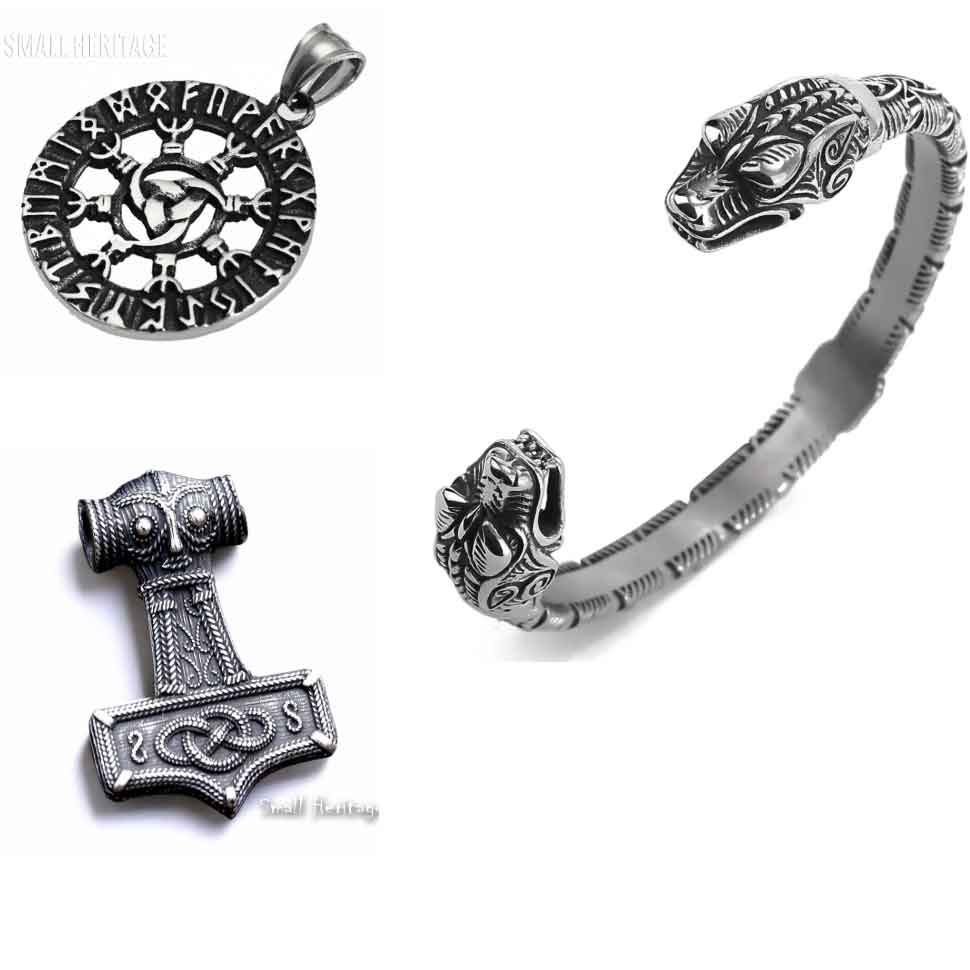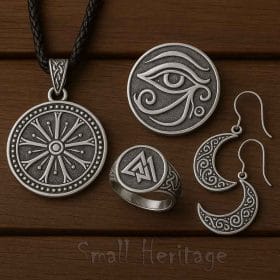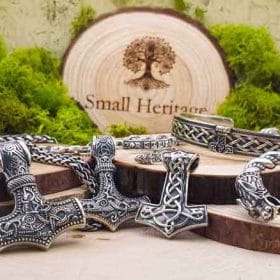
-
Shop by Type
-
Shop by Culture
-
Collections
Home » Blog » Cultural Heritage » Pagan Jewelry: Meaning, Styles, and Cultural Influence Across Time

Pagan jewelry carries an undeniable charm — a blend of mysticism, ancestral symbolism, and timeless craftsmanship. Long before organized religions took hold, ancient civilizations adorned themselves with symbols that reflected their beliefs, their gods, and the forces of nature. Today, these sacred motifs continue to influence modern pagan necklaces, bracelets, and pendants, connecting the present to the spiritual roots of the past.
In this comprehensive guide, we’ll explore the origins, cultural contexts, and popular styles of pagan jewelry from various traditions including Norse, Celtic, Middle Eastern, and Greek. Whether you’re drawn to the aesthetics or the symbolism, this post will help you understand what makes pagan jewelry a meaningful and powerful accessory.
At its core, pagan jewelry refers to ornaments and adornments inspired by the spiritual and mythological beliefs that predate Christianity, Islam, and Judaism. Pagan traditions often revolve around nature, polytheism, ancestor worship, and cosmology. These belief systems shaped symbols that have survived for centuries — now worn as tokens of spirituality, protection, and identity.
From the Thor’s hammer of Norse warriors to the Tree of Life in Celtic lands and ankh pendants in ancient Egypt, pagan jewelry serves both as decoration and sacred amulet.
Modern wearers choose pagan jewelry for various reasons:
Whether worn as a personal talisman or fashion statement, pagan pendants, bracelets, and necklaces carry a depth of meaning that goes beyond beauty.

Let’s explore some of the most widely used motifs in pagan jewelry design across regions and cultures.
Norse pagan jewelry is rich in myth and magic. Rooted in the ancient beliefs of the Vikings and Germanic tribes, Norse symbols are bold, powerful, and deeply spiritual.
Modern Norse pagan bracelets and necklaces often feature stainless steel or silver renditions of these sacred symbols, offering a contemporary way to wear ancient wisdom.
Celtic pagan jewelry is synonymous with intricate knotwork, natural motifs, and references to the cycles of life and death.
Celtic pagan necklaces often mix knots with gemstones like amber or turquoise, enhancing their energy and aesthetic.
Before the spread of Abrahamic religions, the Middle East was home to rich polytheistic traditions.
Many Middle Eastern pagan pendants combine bold geometric shapes with natural materials like lapis lazuli and obsidian.
Ancient Greece offered a pantheon of deities and symbols associated with wisdom, love, war, and fate.
Greek pagan jewelry often appears in coin-like pendants or engraved bangles adorned with olive branches or mythological figures.
The most popular form, pagan necklaces are versatile and worn close to the heart — literally and spiritually. They often feature central pendants with symbolic engravings or gemstone settings. Materials include silver, bronze, stainless steel, and leather.
Popular styles:
Pagan bracelets and bangles often carry talismanic energy. They’re perfect for everyday wear and may feature engraved runes, beads, or twisted metal bands.
Notable features:
Worn alone or layered, pagan pendants serve as the heart of spiritual adornment. Whether it’s a Valknut, ankh, or Triquetra, the pendant often carries specific energies meant to protect or guide the wearer.
Some are hand-hammered for a rustic look; others are cast with high precision in sterling silver or durable stainless steel.
Historically, pagan jewelry was made with available materials: bronze, iron, copper, gold, and silver. Today, modern alternatives like stainless steel offer a low-maintenance, durable option while still honoring historical accuracy.
Silver remains a top choice for pagan bracelets and pendants due to its beauty and metaphysical association with the moon and intuition.
When shopping for authentic pagan jewelry, consider:

At Small Heritage, we specialize in historically inspired jewelry, including pagan necklaces, bracelets, and pendants that honor Norse, Celtic, and ancient Middle Eastern motifs. Every piece is thoughtfully designed to reflect ancient artistry and modern sensibility.
Whether you’re seeking strength through the Thor’s Hammer, wisdom via the Tree of Life, or personal transformation symbolized by the Ouroboros, pagan jewelry is a timeless way to stay grounded in heritage while expressing individuality.
It’s more than an accessory — it’s a bridge between the ancient and the modern, the visible and the unseen.
Explore styles, connect with symbolism, and let your jewelry tell the story of your spirit.